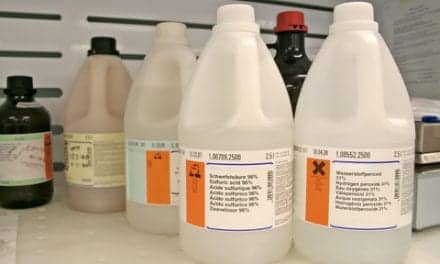One hospital’s redesign of its respiratory care department allocates resources based on the severity of the patient’s condition rather than rote performance of universal ventilator checks.
Children’s Hospital, Oakland, Calif, seized the opportunity to improve patient care by enhancing the role of the RCP as an expert resource and consultant in ventilator management. This entailed replacing a current standard of care with a potentially better standard of care. At times, standards impede change and improvement. In this case, the impediment was the standard in place for routine ventilator checks.
A decade ago, the standard of care called for oxygen checks, for intermittent positive-pressure breathing (IPPB) treatment, and for changing the ventilator circuit every 24 hours. Today, room-to-room oxygen checks are rare, few departments have an IPPB machine in working condition, and institutions wait 3 to 4 weeks between ventilator circuit changes. Standards of care that seemed quite appropriate have changed as a result of new technologies and evidence-based practices. A few years ago, it would not have been considered safe, effective, or efficient to pass the same suction catheter down the same endotracheal tube repeatedly for 48 to 72 hours, but in-line suction is quickly gaining acceptance as the standard of care throughout the world.
VENTILATOR CHECKS
The traditional frequency of ventilator checks, typically performed every 1 to 2 hours, was not established for any particular reason. Perhaps it was based on the fact that early ventilators could not be trusted; pneumatically driven units had multiple sources of potential leaks. Research on outcomes that relate to the frequency and/or content of ventilator checks does not exist in the literature, however.
Routine ventilator checks are a standard of practice today, but it is time to take a second look at this practice. There is no national consensus on the optimal frequency of ventilator checks. There is no supporting documentation for the establishment of current practices. There do exist three documents recommending a frequency for ventilator checks. The Society for Critical Care Medicine recommends ventilator checks every 4 hours.1 Branson2 also recommends ventilator checks every 4 hours, and the American Association for Respiratory Care (AARC) identifies no specific frequency in its ventilator guidelines, recommending that the interval be institution specific. 3-5 In other words, what works best for your specific environment. There is wide variation in practice, according to informal inquiries and the responses of a large audience at the AARC national convention in Atlanta on November 8, 1998. Most departments appear to be performing ventilator checks every 2 hours, with a minority reporting frequencies between 4 and 12 hours.
REENGINEERING
Several years ago, Children’s Hospital underwent the redesign and reengineering of its respiratory care department, as both a medical institution and a business. In determining how to use redesign and reengineering concepts to optimize patient care and benefit the department and its patients, the author was fortunate to have the aid of Michael Mahlmeister, MS, RRT, RCP. He had designed a model for varying the content and frequency of ventilator checks and the concept of charting by exception that seemed likely to apply to Children’s Hospital.
In examining the department’s time-consuming, task-oriented ventilator checks, which were then being performed every 3 hours, several issues become evident. Therapists were often unable to attend patient rounds because they were too busy checking ventilators. Calls were received from unit RCPs who were unable to perform pulmonary function tests because they were behind in checking ventilators. In addition, RCPs often had to rearrange their lunch schedules because one cycle of ventilator rounds was ending after the next was scheduled to begin. It seemed that ventilator checks were paper-focused care, not patient-focused care.
INTERVENTION
By 1994, the time was right for change. The departmental redesign effort was in progress, and the Joint Commission on Accreditation of Healthcare Organizations was mandating a collaborative effort in patient care that called for shared patient care responsibilities and optimal utilization of the expertise of each discipline. Paperwork time needed to be cut so that RCPs could serve as resources and consultants and could implement changes in patient care in a timely manner. They needed time to become key clinicians, with roles in minimizing lengths of stay in the intensive care unit (ICU) and ensuring positive patient outcomes. Ventilator-check sheets full of redundant numbers were saying little about patient outcomes. Documenting rows of numbers, hour after hour, did little to ensure the RCP’s role as a resource and consultant. Something had to be changed.
Ventilators themselves had certainly changed. Gone were the pneumatically controlled, leaky, computerless ventilators of past decades. Sophisticated ventilator technology allows operation within tight, computer-controlled parameters. Ventilators possess multiple, built-in, redundant systems to alert clinicians to any malfunction, and they engage in continuous self-diagnostic operations.
With these motivations, the ventilator-check protocol was redesigned by the neonatal ICU’s respiratory care coordinator, Tim Winn, RRT, and the author. The new practice incorporated three elements:
o a patient-classification system;
o a patient assessment and a patient-support systems check; and
o documentation by exception.
Each patient receives a score of 0 to 4 from the RCP at the beginning of each shift. The score is based on predefined clinical criteria and perceived respiratory care needs. This score determines the scope of patient assessment and the need for respiratory care intervention. Documentation by exception is used to minimize the time spent recording ventilator performance and clinical assessment information on the ventilator flow sheet. The patient-support systems check establishes a verification of current physician’s orders, of the functioning of the ventilator, of appropriately narrow alarm settings, and of the patient’s response to the set parameters and mode.
A goal or plan directed at positive patient outcomes for the day is established at the beginning of the shift. The patient-support systems check is documented during every 12-hour shift. In addition, a patient assessment is performed that focuses on the status of the patient in terms of desired outcomes for the shift. At the end of the shift, a summary is provided indicating whether the goal was met. If the goal was not met, an assessment is written detailing how further care may be able to move the patient toward a positive outcome. This model eliminates the performance of the traditional routine ventilator checks on all patients. Rather, RCP resources are allocated based on each patient’s severity score and care plan, with the frequency and level of patient assessment and monitoring individually tailored to focus on the multidisciplinary, collaborative pursuit of care-plan outcomes.
RESULTS
After 4 years, experience with this model has led to an increase in the perceived value of the RCP in the ICU. Nurse and physician satisfaction has improved, as has recognition that RCPs have increased their availability and their involvement in the patient’s care plan. The department is providing more timely interventions, and RCP staff members express greater job satisfaction, although they initially expressed safety concerns when asked to discontinue routine ventilator checks. Incident reports related to respiratory management and ventilator complications remain at levels slightly lower than those seen when checks were performed every 3 hours. RCPs now find more time to be productive members of the multidisciplinary team; they have input during rounds, they drive weaning protocols, they are responsible for advanced modes of ventilation and effective medicated-aerosol delivery, and they are able to incorporate daily use of ventilator graphics into their ventilator management.
The department is actively involved in a comprehensive asthma program, has developed a point-of-care service involving blood-gas and electrolyte analysis, and is involved in many research projects. These positive changes occurred despite an increase in patient census.
The department recently summarized outcomes data concerning ventilator management for asthma patients in the pediatric ICU. For 1996 through 1998, there were 435 patients admitted to the unit with the diagnosis of asthma. Of those 435 patients, 50 needed mechanical ventilation (and of these, 47 had been intubated before arrival). There was no reported mortality within this group, and no patient experienced barotrauma.
CONCLUSION
A 12-hour interval for ventilator checks and charting by exception may not be feasible for every unit, but some version of this program may be viable. It should be noted that Children’s Hospital units are open, with most patient beds, ventilators, and ventilators’ graphic displays visible from most angles. In addition, physicians and nurses are not routinely making ventilator changes.
Do not lock in a standard of practice for the sake of tradition. Standards of practice should be maintained only if they result in good practice and good practice means not only safe and effective practice, but efficient practice as well. The individuals able to provide such practices will be the individuals who survive in this era of health care.
Soon, computers will collect the rows of ventilator numbers. If, when this time comes, RCPs are still spending most of their time documenting ventilator parameters, any administrative decision to reduce staffing levels will have an obvious target. RCPs have the talent and resources to accomplish more than the management of numbers, and they should be given the chance to prove that. The consideration of this model, and others like it, is imperative as the profession moves toward the 21st century and redefines its role in health care.
There is no scientific research to show that conducting ventilator checks every 2 hours enhances patient care. There are, however, articles6-8 indicating the enhancement of patient outcomes when RCPs are intimately involved as resources and consultants to the medical team.
Katie Sabato, MS, RRT, is the respiratory supervisor for the pediatric ICU and emergency department at Children’s Hospital, Oakland, Calif.
ACKNOWLEDGMENT
The author wishes to acknowledge the willingness to accept a change in practice of the respiratory care staff at Children’s Hospital.
References
1. SCCM Task Force Guidelines. Guidelines for standard of care for patients with acute respiratory failure on mechanical ventilation. Crit Care Med. 1991;19:276-278.
2. Branson R. Monitoring ventilator function. Crit Care Clin. 1995;11:127-143.
3. AARC consensus statement on the essentials of mechanical ventilation. Respiratory Care. 1992;37:1000-1008.
4. AARC clinical practice guidelines: patient-ventilator system check. Respiratory Care. 1992;37:882-886.
5. ACCP consensus conference: mechanical ventilation. Respiratory Care. 1993;38:1389-1417.
6. Horst HM, Mouro D. Decrease in ventilation time with a standardized weaning process. Arch Surg. 1998;133:483-488.
7. Ely EW, Bennett PA. Large scale implementation of a respiratory therapist-driven protocol for ventilator weaning. Am J Respir Crit Care Med. 1999;159:439-446.
8. Kollef MH, Shapiro SD. A randomized, controlled trial of protocol-directed versus physician-directed weaning from mechanical ventilation. Crit Care Med. 1997;25:567-574.









